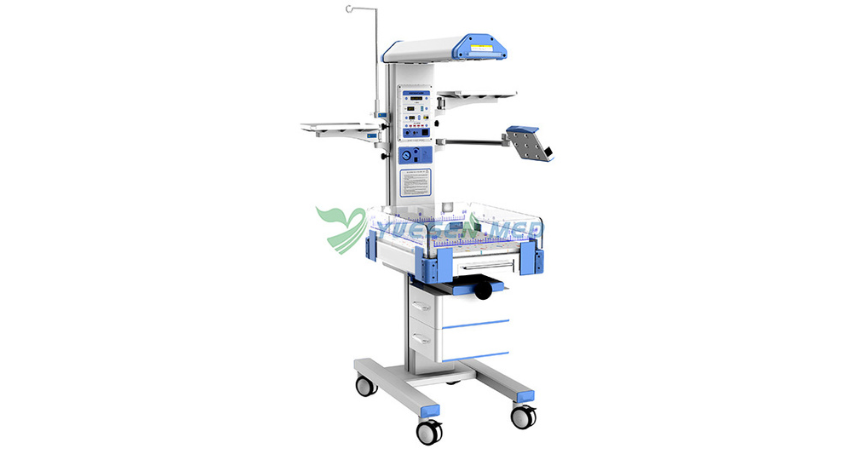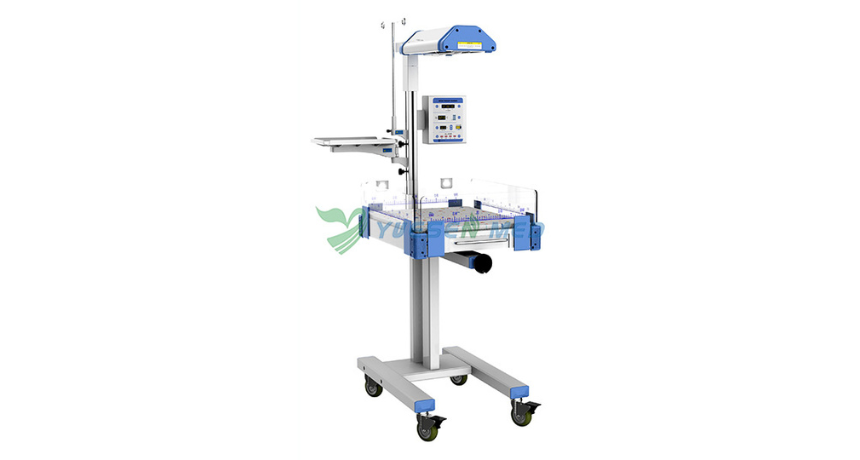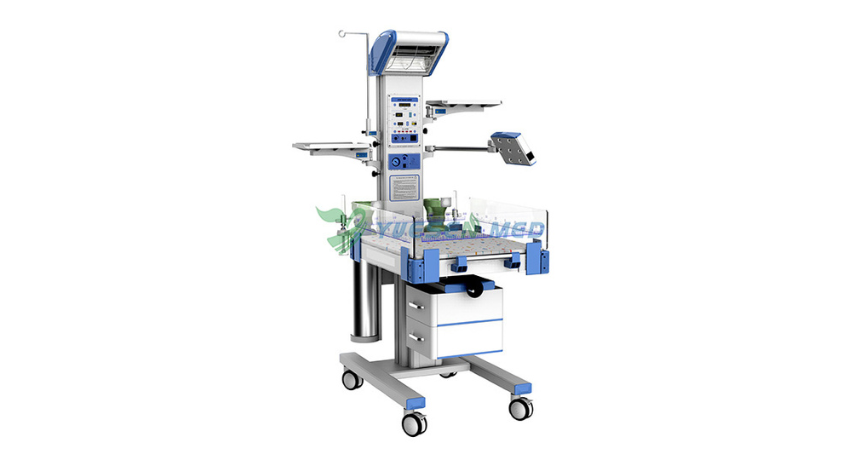Hot Products
YSX500D 50kW DR system set up and put into service in Cambodia.
YSENMED YSX500D 50kW digital x-ray system has been successfully set up and put into service in a hospital in Cambodia.
YSX056-PE serving as a vehicle-mounted x-ray in the Philippines
YSX056-PE 5.6kW portable x-ray unit has been adapted to fit on a truck, to provide mobile x-ray examination service for remote communities in the Philippines.
X Ray Machine To Zimbabwe
x ray machine, 50KW x ray machine
Microscope To Malawi
Achromatic objectives: 4X、10X、40X(S), 100X(S、Oil) Wide field eyepiece: WF10X(WF16X for option) Eyepiece head: Sliding binocular head inclined at 45° Stage: Double layer mechanical stage size 140X140mm, moving range 75X45mm Focusing: Coaxial coarse and
Portable and Precise: Exploring the Benefits of Table Type Low-Speed Centrifuges
Views : 769
Update time : 2024-10-16 11:34:00
When it comes to laboratory equipment, few tools are as versatile and essential as centrifuges. Among them, table type low-speed centrifuges stand out for their portability and precision. Whether you're a seasoned researcher or a curious student, understanding the benefits of these devices can elevate your work to new heights. So, let's dive into the world of table type low-speed centrifuges and explore why they might just be the unsung heroes of the lab.

What is a Table Type Low-Speed Centrifuge?
Before we get into the nitty-gritty, let's clarify what we mean by "table type low-speed centrifuge." Essentially, it's a compact centrifuge designed to sit on a lab bench. Unlike high-speed models, these machines operate at lower RPMs (revolutions per minute), making them ideal for separating components in biological samples without causing damage. Think of it as a gentle giant—powerful yet careful.
The Anatomy of a Table Type Low-Speed Centrifuge
Key Components
1. Rotor: This is where the magic happens. The rotor spins the samples, creating centrifugal force.
2. Control Panel: User-friendly controls allow you to set the speed and time easily.
3. Sample Holders: These secure your test tubes or containers in place during operation.
4. Housing: The outer shell protects the internal components and ensures safety.
How It Works
When you load your samples and start the centrifuge, the rotor spins at a set speed. This spinning motion creates a force that pushes denser materials to the bottom of the container, effectively separating them from lighter components. It's like a mini roller coaster for your samples—thrilling yet controlled!
Why Choose a Table Type Low-Speed Centrifuge?
Portability: Take It Anywhere
One of the standout features of table type low-speed centrifuges is their portability. Unlike larger models that require dedicated space, these compact units can easily fit on any lab bench. This means you can move them around as needed, making them perfect for multi-user environments or smaller labs.
Precision: The Art of Separation
Precision is crucial in any scientific endeavor. Table type low-speed centrifuges are designed to provide consistent and accurate results. The lower speeds prevent excessive shear forces, ensuring that delicate samples remain intact. This is especially important in fields like molecular biology, where sample integrity is paramount.
Cost-Effective Solution
Investing in lab equipment can be daunting, especially for smaller institutions or startups. Table type low-speed centrifuges often come at a lower price point compared to their high-speed counterparts, making them a budget-friendly option without sacrificing quality.
Versatility: A Jack of All Trades
Applications Across Disciplines
Table type low-speed centrifuges are not limited to one specific field. They find applications in various disciplines, including:
- Clinical Laboratories: For blood and urine sample processing.
- Biotechnology: In DNA and RNA isolation protocols.
- Pharmaceuticals: For drug formulation and testing.
- Food Science: To analyze components in food samples.
Sample Types
These centrifuges can handle a wide range of sample types, from liquids to gels. Whether you're working with blood, cell cultures, or even environmental samples, you can trust that a table type low-speed centrifuge can get the job done.
User-Friendly Features
Intuitive Controls
Modern table type low-speed centrifuges come equipped with user-friendly control panels. Most feature digital displays that make it easy to set parameters like speed and time. This means you spend less time fiddling with settings and more time focusing on your experiments.
Safety Mechanisms
Safety is always a concern in the lab. Many table type low-speed centrifuges include built-in safety features, such as lid locks that prevent operation when the lid is open. This ensures that users are protected from accidents, giving you peace of mind while you work.
Maintenance Made Easy
Cleaning and Care
Maintaining your centrifuge doesn't have to be a chore. Most table type low-speed centrifuges are designed for easy cleaning. A simple wipe-down after use can keep your machine in top shape. Plus, regular checks on the rotor and sample holders can prevent wear and tear.
Longevity
With proper care, these centrifuges can last for years, making them a solid investment for any lab. Their durable construction means they can withstand the rigors of daily use without compromising performance.
Environmental Impact
Energy Efficiency
In today's world, being eco-friendly is more important than ever. Table type low-speed centrifuges are generally more energy-efficient than larger models. This not only saves you money on electricity bills but also reduces your lab's carbon footprint.
Reduced Waste
By preserving sample integrity and minimizing the need for repeat tests, these centrifuges contribute to less waste in the lab. It's a win-win situation for both researchers and the environment.
Conclusion: The Unsung Hero of the Lab
In conclusion, table type low-speed centrifuges are a fantastic addition to any laboratory. Their portability, precision, and versatility make them invaluable tools for researchers across various fields. With user-friendly features and easy maintenance, they're designed to fit seamlessly into your workflow. So, whether you're separating cells, purifying proteins, or analyzing food samples, consider investing in a table type low-speed centrifuge. It might just become your new best friend in the lab!
FAQ
What types of samples can be processed in a table type low-speed centrifuge?
Table type low-speed centrifuges are versatile and can handle a variety of samples, including blood, urine, cell cultures, and environmental samples. They are particularly effective for separating components in biological fluids, such as plasma and serum from whole blood, without damaging sensitive cellular structures.
How can I maintain my table type low-speed centrifuge?
Maintaining your centrifuge is crucial for its longevity and performance. Regularly clean the rotor and sample holders after each use to prevent residue buildup. Additionally, periodically check for any signs of wear or damage, and ensure that the rotor is properly balanced during operation. Following the manufacturer's maintenance guidelines will also help keep your centrifuge in top condition.
What are the advantages of using a low-speed centrifuge over a high-speed centrifuge?
Low-speed centrifuges offer several advantages, particularly in preserving sample integrity. They minimize shear forces, which can damage delicate biological samples. Additionally, they are often more compact and cost-effective, making them ideal for smaller labs or multi-user environments. High-speed centrifuges, while powerful, may not be necessary for all applications and can lead to sample degradation.

What is a Table Type Low-Speed Centrifuge?
Before we get into the nitty-gritty, let's clarify what we mean by "table type low-speed centrifuge." Essentially, it's a compact centrifuge designed to sit on a lab bench. Unlike high-speed models, these machines operate at lower RPMs (revolutions per minute), making them ideal for separating components in biological samples without causing damage. Think of it as a gentle giant—powerful yet careful.
The Anatomy of a Table Type Low-Speed Centrifuge
Key Components
1. Rotor: This is where the magic happens. The rotor spins the samples, creating centrifugal force.
2. Control Panel: User-friendly controls allow you to set the speed and time easily.
3. Sample Holders: These secure your test tubes or containers in place during operation.
4. Housing: The outer shell protects the internal components and ensures safety.
How It Works
When you load your samples and start the centrifuge, the rotor spins at a set speed. This spinning motion creates a force that pushes denser materials to the bottom of the container, effectively separating them from lighter components. It's like a mini roller coaster for your samples—thrilling yet controlled!
Why Choose a Table Type Low-Speed Centrifuge?
Portability: Take It Anywhere
One of the standout features of table type low-speed centrifuges is their portability. Unlike larger models that require dedicated space, these compact units can easily fit on any lab bench. This means you can move them around as needed, making them perfect for multi-user environments or smaller labs.
Precision: The Art of Separation
Precision is crucial in any scientific endeavor. Table type low-speed centrifuges are designed to provide consistent and accurate results. The lower speeds prevent excessive shear forces, ensuring that delicate samples remain intact. This is especially important in fields like molecular biology, where sample integrity is paramount.
Cost-Effective Solution
Investing in lab equipment can be daunting, especially for smaller institutions or startups. Table type low-speed centrifuges often come at a lower price point compared to their high-speed counterparts, making them a budget-friendly option without sacrificing quality.
Versatility: A Jack of All Trades
Applications Across Disciplines
Table type low-speed centrifuges are not limited to one specific field. They find applications in various disciplines, including:
- Clinical Laboratories: For blood and urine sample processing.
- Biotechnology: In DNA and RNA isolation protocols.
- Pharmaceuticals: For drug formulation and testing.
- Food Science: To analyze components in food samples.
Sample Types
These centrifuges can handle a wide range of sample types, from liquids to gels. Whether you're working with blood, cell cultures, or even environmental samples, you can trust that a table type low-speed centrifuge can get the job done.
User-Friendly Features
Intuitive Controls
Modern table type low-speed centrifuges come equipped with user-friendly control panels. Most feature digital displays that make it easy to set parameters like speed and time. This means you spend less time fiddling with settings and more time focusing on your experiments.
Safety Mechanisms
Safety is always a concern in the lab. Many table type low-speed centrifuges include built-in safety features, such as lid locks that prevent operation when the lid is open. This ensures that users are protected from accidents, giving you peace of mind while you work.
Maintenance Made Easy
Cleaning and Care
Maintaining your centrifuge doesn't have to be a chore. Most table type low-speed centrifuges are designed for easy cleaning. A simple wipe-down after use can keep your machine in top shape. Plus, regular checks on the rotor and sample holders can prevent wear and tear.
Longevity
With proper care, these centrifuges can last for years, making them a solid investment for any lab. Their durable construction means they can withstand the rigors of daily use without compromising performance.
Environmental Impact
Energy Efficiency
In today's world, being eco-friendly is more important than ever. Table type low-speed centrifuges are generally more energy-efficient than larger models. This not only saves you money on electricity bills but also reduces your lab's carbon footprint.
Reduced Waste
By preserving sample integrity and minimizing the need for repeat tests, these centrifuges contribute to less waste in the lab. It's a win-win situation for both researchers and the environment.
Conclusion: The Unsung Hero of the Lab
In conclusion, table type low-speed centrifuges are a fantastic addition to any laboratory. Their portability, precision, and versatility make them invaluable tools for researchers across various fields. With user-friendly features and easy maintenance, they're designed to fit seamlessly into your workflow. So, whether you're separating cells, purifying proteins, or analyzing food samples, consider investing in a table type low-speed centrifuge. It might just become your new best friend in the lab!
FAQ
What types of samples can be processed in a table type low-speed centrifuge?
Table type low-speed centrifuges are versatile and can handle a variety of samples, including blood, urine, cell cultures, and environmental samples. They are particularly effective for separating components in biological fluids, such as plasma and serum from whole blood, without damaging sensitive cellular structures.
How can I maintain my table type low-speed centrifuge?
Maintaining your centrifuge is crucial for its longevity and performance. Regularly clean the rotor and sample holders after each use to prevent residue buildup. Additionally, periodically check for any signs of wear or damage, and ensure that the rotor is properly balanced during operation. Following the manufacturer's maintenance guidelines will also help keep your centrifuge in top condition.
What are the advantages of using a low-speed centrifuge over a high-speed centrifuge?
Low-speed centrifuges offer several advantages, particularly in preserving sample integrity. They minimize shear forces, which can damage delicate biological samples. Additionally, they are often more compact and cost-effective, making them ideal for smaller labs or multi-user environments. High-speed centrifuges, while powerful, may not be necessary for all applications and can lead to sample degradation.
Related News
Read More >>
 What is the Difference Between Radiant Warmer and Phototherapy?
What is the Difference Between Radiant Warmer and Phototherapy?
Apr .19.2025
Radiant warmers and phototherapy are crucial in neonatal care, but they serve different purposes. Let's dive into the nitty-gritty of these two techniques and explore how they differ, and when each is appropriate.
 YSX056-PE portable digital x-ray unit set up in the Philippines
YSX056-PE portable digital x-ray unit set up in the Philippines
Apr .19.2025
YSX056-PE portable digital x-ray unit has been set up in a hospital in the Philippines and the good quality images please the doctors.
 Is an Infant Radiant Warmer Good for Babies' Health?
Is an Infant Radiant Warmer Good for Babies' Health?
Apr .13.2025
What exactly is the infant radiant warmer, and how does it contribute to a baby's health? Let's dive into this topic and explore the ins and outs of infant radiant warmers.
 What is an Infant Radiant Warmer?
What is an Infant Radiant Warmer?
Apr .12.2025
One of the unsung heroes in neonatal care is the infant radiant warmer. But what exactly is it? Let's dive into the world of infant care and explore the ins and outs of this vital device.



